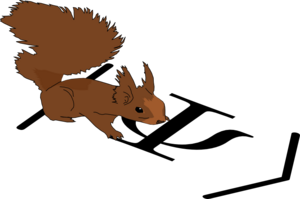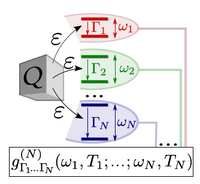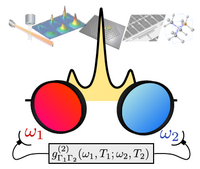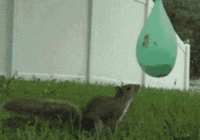m (→Papers) |
m |
||
| Line 2: | Line 2: | ||
[[File:squirrel-2014.png|300px|right]] | [[File:squirrel-2014.png|300px|right]] | ||
| − | SQUIRREL (acronym for <span style="font-variant: small-caps;">'''S'''ensing '''QU'''antum '''I'''nformation co'''RREL'''ations</span>) | + | SQUIRREL (acronym for <span style="font-variant: small-caps;">'''S'''ensing '''QU'''antum '''I'''nformation co'''RREL'''ations</span>) was [[Elena]]'s [[Marie Curie]] research project ([http://ec.europa.eu/research/mariecurieactions/about-mca/actions/ief/index_en.htm IEF-Fellowships for career development], FP7-PEOPLE-2013-IEF project number 623708) at the {{uam}}, on the period {{thisday|1|March|2014}}—{{thisday|15|December|2014}}. [[Fabrice]] was the scientist in charge. |
== Goals == | == Goals == | ||
| Line 8: | Line 8: | ||
Quantum correlations are those supporting technologies such as quantum information processing. For realistic applications, one has to consider open quantum systems, that is, in contact with the classical world through lifetime and excitation. | Quantum correlations are those supporting technologies such as quantum information processing. For realistic applications, one has to consider open quantum systems, that is, in contact with the classical world through lifetime and excitation. | ||
| − | [[File:sensing-scheme.png|200px|left]] | + | <wz tip="SQUIRREL is supported by a powerful technique, introduced by the Researcher a year earlier: the methods of 'sensors', that allows to compute easily and with no approximations any number of photon correlations from any quantum optical system (here a black blox). ">[[File:sensing-scheme.png|200px|left]]</wz> |
Quantum correlations are transferred through emitted photons, electrons, etc. and characterise the quantum structure of the system and its suitability as a quantum device. The state-of-the-art is the [http://en.wikipedia.org/wiki/Hanbury_Brown_and_Twiss_effect Hanbury Brown-Twiss two-photon coincidence counting], which is a particular case of the general problem. At the speed of technological progress, it is now becoming possible to measure higher order correlations of quanta characterised in all their attributes. For instance, cross-correlating photons with fixed frequencies and arrival times is now a routine practice in many laboratories worldwide. The correct interpretation and mastering of such techniques will allow a robust implementation of quantum protocols. | Quantum correlations are transferred through emitted photons, electrons, etc. and characterise the quantum structure of the system and its suitability as a quantum device. The state-of-the-art is the [http://en.wikipedia.org/wiki/Hanbury_Brown_and_Twiss_effect Hanbury Brown-Twiss two-photon coincidence counting], which is a particular case of the general problem. At the speed of technological progress, it is now becoming possible to measure higher order correlations of quanta characterised in all their attributes. For instance, cross-correlating photons with fixed frequencies and arrival times is now a routine practice in many laboratories worldwide. The correct interpretation and mastering of such techniques will allow a robust implementation of quantum protocols. | ||
| − | [[File:sensing-example-Mollow.png|200px|right]] | + | <wz tip="The Mollow triplet, one of the featureful quantum emitters to be found in all platforms, is a treasure trove for frequency correlations, given its peculiar and eponymous spectral shape. It has been at the center of attention of the SQUIRREL project.">[[File:sensing-example-Mollow.png|200px|right]]</wz> |
Theoretically, the computation of such correlations is complicated and tedious as it needs to keep in the calculation all the degrees of freedom for each carrier. Our recently developed general formalism, "[http://journals.aps.org/prl/abstract/10.1103/PhysRevLett.109.183601 the sensing method]", allows to deal for the first time with [http://iopscience.iop.org/1367-2630/15/3/033036/ complicated quantum systems], with many degrees of freedom and particles, and to compute Nth-order correlations, with N>2, at arbitrary times and frequencies. | Theoretically, the computation of such correlations is complicated and tedious as it needs to keep in the calculation all the degrees of freedom for each carrier. Our recently developed general formalism, "[http://journals.aps.org/prl/abstract/10.1103/PhysRevLett.109.183601 the sensing method]", allows to deal for the first time with [http://iopscience.iop.org/1367-2630/15/3/033036/ complicated quantum systems], with many degrees of freedom and particles, and to compute Nth-order correlations, with N>2, at arbitrary times and frequencies. | ||
| Line 18: | Line 18: | ||
(See the [http://bcove.me/1zaofsvh video abstract] for a quick introduction to the topic) | (See the [http://bcove.me/1zaofsvh video abstract] for a quick introduction to the topic) | ||
| − | The goal of the | + | The goal of the SQUIREL project was to develop and disseminate this novel and interdisciplinary theoretical approach in a wide range of quantum systems (cavity QED, superconducting circuits, atomic and [http://iopscience.iop.org/1367-2630/15/2/025019 semiconductor systems], plasmonic, Bose-Einstein condensates, etc.), by analysing the physics made accessible by the sensing method, by supporting experiments on quantum correlations in a variety of fields and by exploiting correlations to improve and design new quantum devices. |
== Context == | == Context == | ||
| Line 29: | Line 29: | ||
== Results and its outreach == | == Results and its outreach == | ||
| − | == | + | == Publications == |
1. ''Emitters of N-photon bundles'', C. Sánchez-Muñoz, E. del Valle, A. González-Tudela, S. Lichtmannecker, K. Müller, M. Kaniber, C. Tejedor, J.J. Finley and F.P. Laussy. [http://www.nature.com/nphoton/journal/vaop/ncurrent/full/nphoton.2014.114.html Nature Photonics 8, 550 (2014)] ([http://arxiv.org/abs/1306.1578 arXiv:1306.1578]). Also see the [http://www.nature.com/nphoton/journal/v8/n7/full/nphoton.2014.144.html News and Views] | 1. ''Emitters of N-photon bundles'', C. Sánchez-Muñoz, E. del Valle, A. González-Tudela, S. Lichtmannecker, K. Müller, M. Kaniber, C. Tejedor, J.J. Finley and F.P. Laussy. [http://www.nature.com/nphoton/journal/vaop/ncurrent/full/nphoton.2014.114.html Nature Photonics 8, 550 (2014)] ([http://arxiv.org/abs/1306.1578 arXiv:1306.1578]). Also see the [http://www.nature.com/nphoton/journal/v8/n7/full/nphoton.2014.144.html News and Views] | ||
Revision as of 09:38, 12 February 2015
Contents |
SQUIRREL
SQUIRREL (acronym for Sensing QUantum Information coRRELations) was Elena's Marie Curie research project (IEF-Fellowships for career development, FP7-PEOPLE-2013-IEF project number 623708) at the Universidad Autónoma de Madrid, on the period 1 March (2014)—15 December (2014). Fabrice was the scientist in charge.
Goals
Quantum correlations are those supporting technologies such as quantum information processing. For realistic applications, one has to consider open quantum systems, that is, in contact with the classical world through lifetime and excitation.
Quantum correlations are transferred through emitted photons, electrons, etc. and characterise the quantum structure of the system and its suitability as a quantum device. The state-of-the-art is the Hanbury Brown-Twiss two-photon coincidence counting, which is a particular case of the general problem. At the speed of technological progress, it is now becoming possible to measure higher order correlations of quanta characterised in all their attributes. For instance, cross-correlating photons with fixed frequencies and arrival times is now a routine practice in many laboratories worldwide. The correct interpretation and mastering of such techniques will allow a robust implementation of quantum protocols.
Theoretically, the computation of such correlations is complicated and tedious as it needs to keep in the calculation all the degrees of freedom for each carrier. Our recently developed general formalism, "the sensing method", allows to deal for the first time with complicated quantum systems, with many degrees of freedom and particles, and to compute Nth-order correlations, with N>2, at arbitrary times and frequencies.
(See the video abstract for a quick introduction to the topic)
The goal of the SQUIREL project was to develop and disseminate this novel and interdisciplinary theoretical approach in a wide range of quantum systems (cavity QED, superconducting circuits, atomic and semiconductor systems, plasmonic, Bose-Einstein condensates, etc.), by analysing the physics made accessible by the sensing method, by supporting experiments on quantum correlations in a variety of fields and by exploiting correlations to improve and design new quantum devices.
Context
Sensing QUantum Information coRRELations
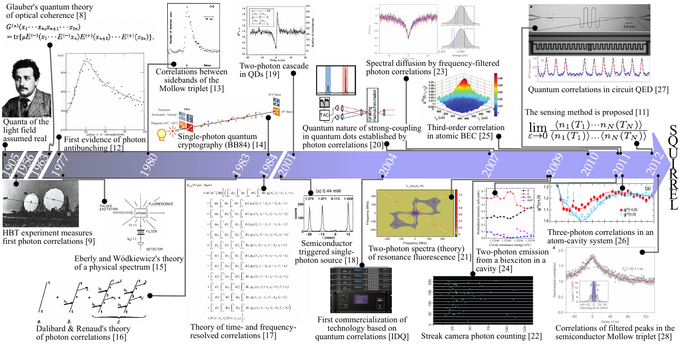
Timeline of breakthroughs providing a background to the SQUIRREL Project.
Results and its outreach
Publications
1. Emitters of N-photon bundles, C. Sánchez-Muñoz, E. del Valle, A. González-Tudela, S. Lichtmannecker, K. Müller, M. Kaniber, C. Tejedor, J.J. Finley and F.P. Laussy. Nature Photonics 8, 550 (2014) (arXiv:1306.1578). Also see the News and Views titled Cavity quantum electrodynamics: A bundle of photons, please by Dmitry V. Strekalov.
2. Spontaneous, collective coherence in driven, dissipative cavity arrays, J. Ruiz-Rivas, E. del Valle, C. Gies, P. Gartner and M. J. Hartmann, Phys. Rev. A 90, 033808 (2014). (arXiv:1401.5776)
3. Ultrafast control of Rabi oscillations in a polariton condensate, L. Dominici, D. Colas, S. Donati, J. P. Restrepo Cuartas, M. De Giorgi, D. Ballarini, G. Guirales, J. C. López Carreño, A. Bramati, G. Gigli, E. del Valle, F. P. Laussy, D. Sanvitto. Phys. Rev. Lett. 113, 226401 (2014) (arXiv:1408.1289). Covered by mi+d and Aula Magna.
4. Violation of classical inequalities by frequency filtering, C. Sánchez Muñoz, E. del Valle, C. Tejedor, F. P. Laussy. Phys. Rev. A 90, 052111 (2014) (arXiv:1403.6182). See a summary and a related video.
5. Measuring photon correlations simultaneously in time and frequency, B. Silva, A. González Tudela, C. Sánchez Muñoz, D. Ballarini, G. Gigli, K. W. West, L. Pfeiffer, E. del Valle, D. Sanvitto, F. P. Laussy. arXiv:1406.0964
6. On-chip generation of indistinguishable photons using cavity quantum-electrodynamics, K. Müller, A. Rundquist, K. A. Fischer, T. Sarmiento, K. G. Lagoudakis, Y. A. Kelaita, C. Sánchez Muñoz, E. del Valle, F. P. Laussy, J. Vučković. arXiv:1408.5942
7. Spanning the full Poincaré sphere with polariton Rabi oscillations, D. Colas, L. Dominici, S. Donati, A.A. Pervishko, T.C.H. Liew, I.A. Shelykh, D. Ballarini, M. de Giorgi, A. Bramati, G. Gigli, E. del Valle, F.P. Laussy, A.V. Kavokin, D. Sanvitto. arXiv:1412.4758
8. Optimization of photon correlations by frequency filtering, A. Gonzalez-Tudela, E. del Valle, F. P. Laussy. arXiv:1501.01799
9. Theory of indistinguishable single photons sources with time and frequency resolution, J. C. López-Carreño and E. del Valle.
10. Photon pair generation by a driven biexciton, E. del Valle, C. Sánchez Muñoz, C. Tejedor, F. P. Laussy.
11. Quantum states of polaritons, J. C. López-Carreño, J. P. Restrepo Cuartas, E. del Valle and F. P. Laussy.
12. Exciting polaritons with quantum light, J. C. López Carreño, C. Sánchez Muñoz, E. del Valle and F. P. Laussy.
Presentations
1. St-Petersburg (Russia), 28-31 May 2014: Invited talk at the International Conference on Problems of Strongly Correlated and Interacting Systems.
2. Montpellier (France), 9-13 June 2014: Poster presentation at PLMCN14.
3. Austin (United States), 10-15 August 2014: Oral and poster presentation at ICPS.
